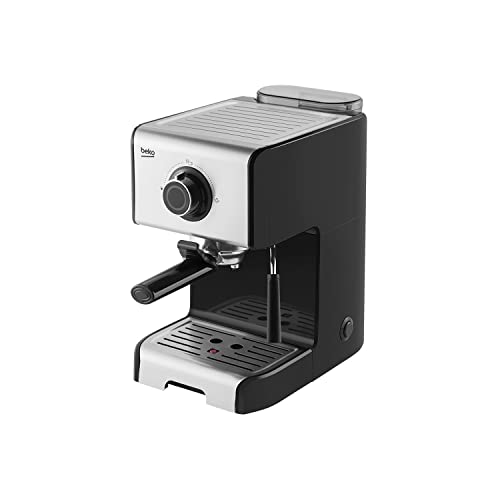How to Make Espresso Machine Coffee
An espresso maker can make an excellent cup of coffee, however it requires a little more installation and maintenance than a traditional drip coffee maker. It also requires that you grind and tamp your own beans.
machine espresso to make espresso is pressure. The way an espresso machine operates is that the heating vessel heats the water to a perfect temperature before forcing it out of the spouts and into the grounds.
Temperature
Espresso is made by forcing hot water under pressure through finely roasted coffee. The temperature of the water is crucial to the quality of the final shot. Low temperatures can cause absence of flavor compounds. High temperatures produce over extraction and can lead to burnt or bitter tastes.
The ideal temperature for espresso is between 195 and 205degF. This temperature is reached by using the group head, which is designed to keep the same temperature and stability throughout the brewing cycle. The E61 is the most well-known group head, as it offers a combination of temperature stabilty, pre-infusion capability, and lever control.
When adjusting the espresso machine for different roasts and brew ratios it is crucial to take into consideration the impact of temperature on the extraction yield and crema. The ideal temperature will differ according to the roast and beans. However generally speaking, it is believed that lighter roasts with higher brew speeds require higher temperatures. A high-quality thermocouple is essential for maintaining the temperature at a constant level.
Pressure
During the process of brewing, espresso machine coffee is pushed under pressure through finely ground coffee grounds that have been stamped. This causes chemical reactions to extract flavors, oils and other soluble components from the beans. The resulting beverage is typically richer and more flavorful than regular coffee.
The ideal espresso machine pressure should be nine bars that's equivalent to the pressure of the ocean at sea level. This is due to the fact that it's at this level that the soluble compounds of espresso are most easily extracted.
However some espresso machines advertise 15 or even 20 bars of pressure. They may be able to reach these pressure levels, but they may not sustain them throughout the extraction.
One bar of pressure is equal to 32 pounds per square inch (PSI) of the tire of a car. This is more than four times the pressure that a professional cyclist needs to pump their bike tires. The ability to control the espresso machine pressure and create consistent espressos is crucial for any serious home barista.
Water
The water you use to make espresso is one of the most important aspects of a great cup of coffee. The right water allows your beans to extract their full potential. However, the wrong water could cause issues like clogging pipes and damage to your expensive machine.
To get the most espresso extraction make sure you choose a natural spring with high mineral content. This water will enhance the flavor of your coffee without the chalky mineral traces that come from tap or bottled waters. This is a great alternative to distilled water or reverse osmosis, which can be too filtered and cause problems with flavor.
However, you should not use filters that remove too many minerals from your tap water because this could cause flavor and extraction issues. Buy a water testing kit to determine the average hardness of your local water. This information can be used to determine the right filtration system for your espresso machine.

Beans
Most coffee drinkers tend to be extremely involved in the entire process of making espresso. They ponder a myriad of variables, including temperature, water pressure beans, milk viscosity and other aspects. If one factor is slightly off, the entire shot might taste bad.
The beans used are the most important element when it comes to espresso. Many people believe that certain kinds are suitable for espresso. Although some beans are more suitable for specific purposes, any roasted coffee bean can be used to make espresso. Espresso beans are roasted for longer than regular coffee beans, and tipycally beyond the second crack. This gives them a darker look and makes them more water-soluble.
The best espresso beans tend to be medium or dark roasted, which give the shots their characteristic richness and boldness. Light roasted beans can also be used to make great espresso, especially when they are ground prior to use to make it easier to use an espresso maker.
Milk
Espresso and milk is a timeless combination. The coffee doesn't just increase energy levels, but the steamed milk helps to balance the bitterness of the espresso, and gives it a delightful creamy flavor. There aren't many culinary combinations more perfect than this one!
If you decide to get an espresso machine that is able to make latte or cappuccino take a look at how easy it is to use. Many of the top espresso machines come with the jug which can be filled with cold or hot milk along with a steam wand and an espresso portafilter to pull the shot. Some models also have a built-in grinder along with a tamper, frother and tamper.
The steam wand should be purged before making use of it for the first time in a day (or after each cup of espresso) to eliminate any water that has condensed. This process only takes 30 seconds, but it is essential to keep your machine running smoothly. If you don't cleanse this process, it could lead to a bitter taste and/or a accumulation of bacteria that could alter the taste or odor of your beverage. It's not difficult to do and should be a part of your regular maintenance routine.
